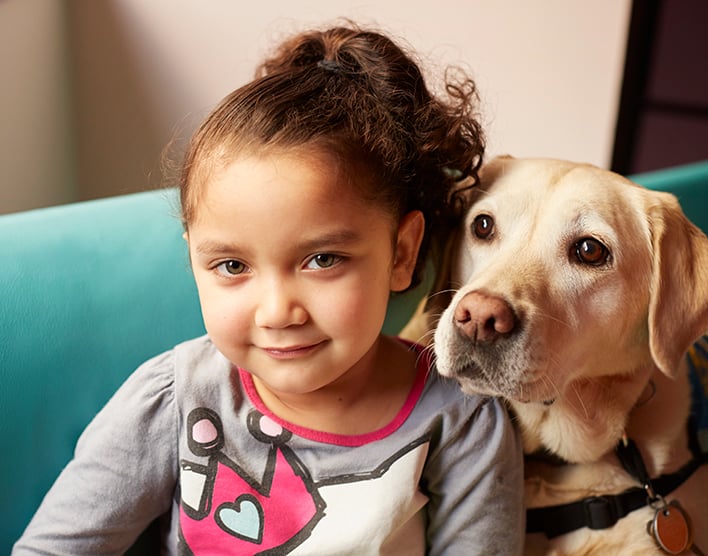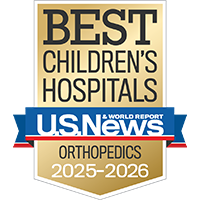Tender wagging care
Our therapy dogs spread joy and smiles at the bedside and throughout the hospital.
Visit Child Life services

Slipped capital femoral epiphysis (SCFE) is a condition in which the growing end (called the epiphysis) of the thighbone slips away from the top of the bone. This can occur in just one hip or both. SCFE mainly affects children between the ages of 9 and 15 during growth spurts, and is more common among boys, African Americans and Pacific Islanders.
SCFE can be treated with a surgical procedure to stabilize the bone.

One of the nation's best for orthopedics

Ranked among the nation's best in 11 specialties
Experts don't know what causes slipped capital femoral epiphysis. It can happen after an accident, such as a fall, or it can develop gradually. Risk factors include:
Children with slipped capital femoral epiphysis may have:
To diagnose slipped capital femoral epiphysis, your child's doctor will:
Slipped capital femoral epiphysis is treated with surgery to prevent the femoral head (the ball at the top of the thighbone) from slipping further. If your child has been diagnosed with SCFE, they should immediately stop putting weight on the leg to prevent additional damage. This means they will need to be on bed rest until surgery.
In this procedure, an orthopedic surgeon makes a small incision at the top of the thigh and inserts a screw through the femoral head to hold it in place. The incision is then closed and covered with a dressing.
Your child's surgeon will go over all risks of the procedure with you beforehand, including the possibilities of bleeding and infection. Some children continue to have limited range of motion and an abnormal gait after the surgery.
Your child will need to stay in the hospital for one to two days after SCFE surgery. We will give them pain medicine as needed.
After the surgery, your child should avoid putting weight on the affected leg for a period of time (typically six weeks, but please follow the doctor's exact instructions). A physical therapist will teach your child how to use crutches or a walker.
If you have concerns after your child returns home from the hospital, call the orthopedic clinic where they were treated. If they were treated at our Oakland campus and there is an issue outside of regular clinic hours, call the hospital operator at (510) 428-3000 and ask the operator to page the on-call orthopedic resident.
Be sure to call if you notice any of the following:
Your child will return to our clinic one week after surgery for a checkup and an X-ray. During this visit, we will remove the dressing covering the incision.
After the follow-up appointment, your child may start taking showers again. However, the incision should not be submerged in water until it's completely healed.
Your child may return to school, using crutches, three to five days after surgery. Please check with your child's school to see whether they can provide assistance, such as access to an elevator or an assigned buddy. If the school can't make these accommodations, we can send a request for home instruction.
Your child may not participate in gym class or contact sports for at least a few months, and possibly for several years, until the thighbone stops growing. The surgeon will determine when it's safe to return to these activities.
UCSF Benioff Children's Hospitals medical specialists have reviewed this information. It is for educational purposes only and is not intended to replace the advice of your child's doctor or other health care provider. We encourage you to discuss any questions or concerns you may have with your child's provider.
Tender wagging care
